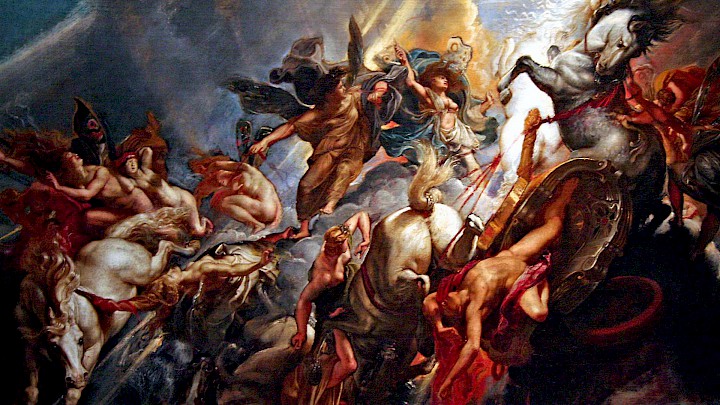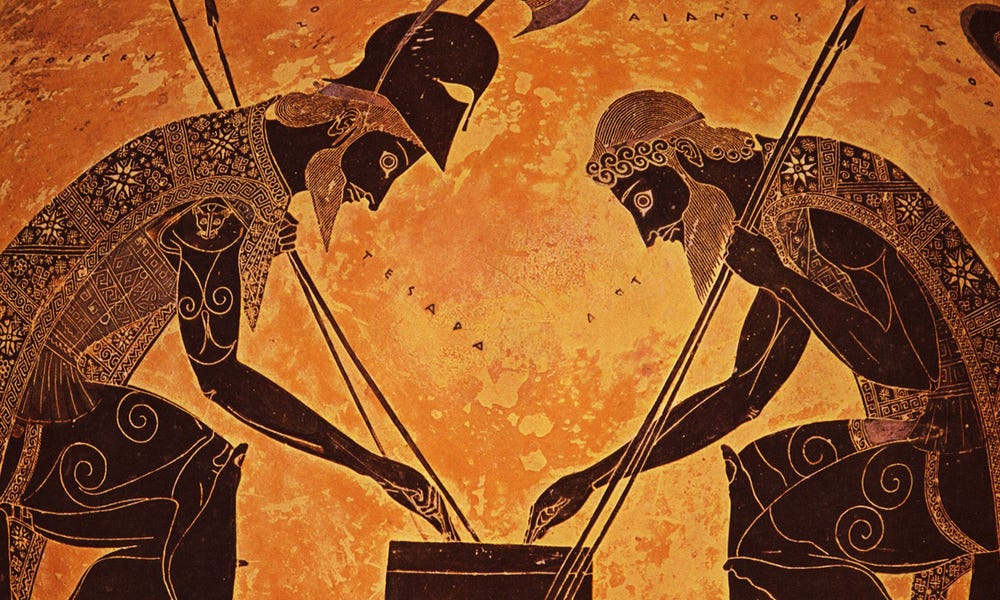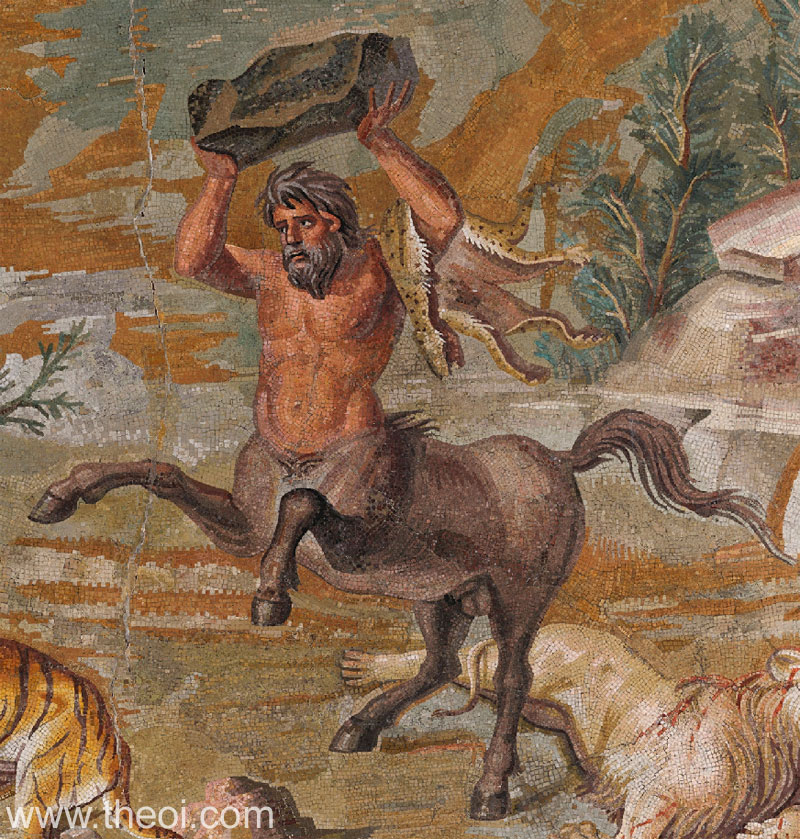The study of motivation and behavior is a search for answers to questions about human nature. Recognizing the importance of the human element in organizations, in this post we attempt to develop a theoretical framework that will help managers understand human behavior---not only to understand the "whys" of past behavior, but to some extent to predict, to change, and even to control future behavior.
 |
Theories of Behavior
Let's begin our search for the "whys" of behavior with psychologist Kurt Lewin's fundamental equation of human behavior:
where B represents individual behavior, f means "a function of" or "is caused by," P is the person, and S is the situation. Lewin's equation then suggests that B is a function of something both inside the Person and outside the person in the Situation. This "something" inside the person is motives or needs that is reflected in individual attitudes---the way individuals feel about things---and represented by personality---an individual's tendency to act. P and S are not independent, but rather are interdependent. Persons are influenced by the Situation in which they find themselves, and Situations are influenced by Persons. These are important ideas in the context of "situational," or "contingency," leadership, in which the appropriate leader behavior is determined by the situation. We will revisit this significant point later.
Goal Oriented Behavior
Behavior is basically goal oriented. In other words, our behavior is generally motivated by a desire to attain some specific result. The goal is not always consciously known by the individual. All of us may wonder at times, "Why did I do that?" The reason for our action is not always apparent to the conscious mind. The drives that motivate distinctive individual behavioral patterns ("personality") are to a considerable degree subconscious and, therefore, are not easily accessible for examination and evaluation.

Sigmund Freud was one of the first to recognize the importance of subconscious motivation. He believed that people are not always aware of everything they want; hence, much of their behavior is affected by subconscious motives or needs. In fact, Freud's research convinced him that an analogy could be drawn between the motivation of most people and the structure of an iceberg. In Freud's view, a significant segment of human motivation appears below the surface of the conscious mind as indicated in Figure 1. Therefore, one usually is aware of only a small portion of one's motivation. Some individuals may make no effort to gain self-insight. But even with professional help---for example, psychotherapy---understanding oneself may be a difficult process, yielding varying degrees of success.
Figure 1 Freud's Iceberg Analogy
The basic unit of behavior is an activity. In fact, all behavior is a series of activities. As human beings, we are always doing something:walking, talking, eating, sleeping, working, and the like. In many instances, we are doing more than one activity at a time, such as talking with someone as we walk or drive to work. At any given moment, we may decide to change from one activity or combination of activities to another. This aspect of human nature raises some important questions. Why do people engage in one activity and not another? Why do they change activities? How can we as managers understand, predict, and even control what activity or activities a person may engage in at a given moment? To predict behavior, managers must know which motives or needs of people evoke a certain action at a particular time.
The Causal Sequence
Norman R.F. Maier, the noted industrial psychologist from the University of Michigan, put the elements previously discussed---the situation, person, behavior(s), and activities---together in his classic causal sequence model:
S represents the Situation, or Stimulus; O the person, or Organism; B the Behavior; and A the Activity or Accomplishment. In Maier's words:
Motives
People differ not only in their ability to do, but also in their will to do, or their motivation. The motivation of people depends on the strength of their motives. Motives are sometimes defined as needs, wants, drives, or impulses within the individual. Motives are directed toward goals, which may be conscious or subconscious.
Viktor Frankl, a German psychologist asserted in his book, Man's Search for Meaning, that, "The striving to find a meaning in one's life is the primary motivational force in man." This was the same theme Tom Peters and Robert Waterman used in their best-selling book, In Search of Excellence, particularly in chapter 3, "Man Waiting for Motivation." They observed that, "The dominating need of human beings is to find meaning, . . . to control one's destiny, . . . to be an expert in the promotion and protection of values."
Motives are the "whys" of behavior. They arouse and maintain activity and determine the general direction of the behavior of an individual. In essence, motives or needs are the mainsprings of action. In our discussions we shall use these two terms---motives and needs---interchangeably. In this context, the term need should not be associated with urgency or any pressing desire for something. It simply means something within an individual that prompts that person to action.

Goals
Goals are outside an individual; they are sometimes referred to as "hoped for" rewards toward which motives are directed. These goals are often called incentives by psychologists. However, we prefer not to use that term because many people in our society tend to equate incentives with tangible financial rewards, such as increased pay, although most of us would agree that there are many intangible rewards, such as praise or power, that are just as important in evoking behavior. Managers who are successful in motivating employees are often providing an environment in which appropriate goals (incentives) are available for need satisfaction.
Motive Strength
We have said that motives, or needs, are the reasons underlying behavior. All individuals have many hundreds of needs. All of these needs compete. What, then, determines which of these motives a person will attempt to satisfy through activity? The need with the greatest strength at a particular moment leads to activity.
Changes in Motive Strength
A motive tends to decrease in strength if it is either satisfied or blocked from satisfaction. Satisfied or blocked needs normally do not motivate individuals to further action.

Need Satisfaction
When a need is satisfied, according to Abraham Maslow, it is no longer a motivator of behavior. High-strength needs that are satisfied are sometimes referred to as "satisfied"---that is the need has been satisfied to the extent that some competing need is now more potent. If a high-strength need is thirst, drinking tends to lower the strength of this need, and other needs may now become more potent. Blocking Need Satisfaction The satisfaction of a need may be blocked. Although a reduction in need strength sometimes follows, it does not always occur initially. Instead there may be a tendency for the person to engage in coping behavior. This is an attempt to overcome the obstacle by trial-and-error problem solving. The person may try a variety of behaviors to find one that will accomplish the goal or will reduce tension created by blockage, as illustrated in Figure 2
Figure 2 Coping Behavior When Blockage Occurs in Attempting to Accomplish a Particular Goal
Initially, the coping behavior may be quite rational. Perhaps the person may even make several attempts in direction 1 before going to direction 2, and make several attempts in direction 2 before moving in direction 3, where some degree of perceived success and goal attainment is finally achieved.
If people continue to strive for something without success, they may substitute goals that satisfy the need. For example, if Mary has a strong desire to be a CPA but continually receives average grades in accounting, she may be willing eventually to settle for another career in business.
:max_bytes(150000):strip_icc()/ThePleiades-5c6b6051c9e77c000119fbf3.jpg)
Cognitive Dissonance
Blocked motives and continually unsuccessful rational coping behavior may lead to forms of irrational coping behavior. Leon Festinger analyzed this phenomenon. His theory of cognitive dissonance deals primarily with the relationships that exist between perceptions people have about themselves and their environment. When individual perceptions have nothing to do with each other, they are considered irrelevant to each other. If one supports the other, they are said to be in a consonant relationship. Dissonance is created when two perceptions that are relevant to each other are in conflict. This situation creates tension, which is psychologically uncomfortable and causes the individual to try to modify one of the incompatible perceptions so as to reduce the tension or dissonance. In a sense, that person engages in coping behavior to regain a condition of consonance or equilibrium. For example, Festinger did research that showed that "heavy smokers are less likely to believe that there is a relationship between smoking and lung cancer than non-smokers." In other words, if they cannot give up smoking, they can at least remain skeptical about research that reports harmful effects. The same phenomenon is at work when a person goes out fishing all day, doesn't catch anything, and remarks about the beautiful weather.
Frustration
The blocking or thwarting of goal attainment is referred to as frustration. This phenomenon is defined in terms of the condition of the individual, rather than in terms of the external environment. A person may be frustrated by an imaginary barrier and may fail to be frustrated by a real barrier.
As previously discussed, rational coping behavior can lead to alternative goal decreasing need strength. Irrational behavior may occur in several forms when blockage to goal accomplishment continues and frustration develops. Frustration may increase to the extent that the individual engages in aggressive behavior.

Aggression can lead to destructive behavior such as hostility and striking out. Freud was one of the first to demonstrate that hostility or rage can be exhibited by an individual in a variety of ways. If possible, individuals will direct their hostility against the object or the person that they feel is the cause of frustration. Angry workers may try to hurt their boss through gossip and other malicious behavior. Often, however, people cannot attack the cause of their frustration directly, and they may look for a scapegoat as a target for their hostility. Scapegoats may be other workers, family members, or innocent pets.
As Norman R.F. Maier said, aggression is only one way in which frustration can be shown. Other forms of frustrated behavior---such as rationalization, regression, fixation, and resignation---may develop if pressures continue or increase.
Rationalization simply means making excuses. For example, an individual might blame someone else for an inability to accomplish a given goal: "It was my boss's fault that I didn't get a raise." Or the person may downgrade the desirability of that particular goal: "I don't want to do that anyway."
Regression is essentially not acting one's age. "Frustrated people tend to give up constructive attempts at solving their problems and regress to more primitive and childish behavior." A person who cannot start the car and proceeds to kick it is demonstrating regressive behavior; so too is a manager who throws a temper tantrum when annoyed and frustrated. Roger G. Barker, Tamara Dembo, and Kurt Lewin showed experimentally that when children are exposed to mild frustration, their play may resemble that of a child two or more years younger.

Fixation occurs when a person continues the same behavior pattern over and over again, even though experience has shown that it can accomplish nothing. Thus, "frustration can freeze old and habitual responses and prevent the use of new and more effectual ones." Maier showed that although habits are normally broken when they bring no satisfaction or lead to punishment, a fixation actually becomes stronger under those circumstances. In fact, he argued that it is possible to change a habit into a fixation by too much punishment. This phenomenon is seen in children who blindly continue to behave in an objectionable manner after being severely punished. Thus, Maier concluded that punishment can have two effects on behavior. It may either eliminate the undesirable behavior or lead to fixation and other symptoms of frustration as well. It follows that punishment may be a dangerous management tool, because its effects are difficult to predict. According to James A.C. Brown, common symptoms of fixation in industry are, "the inability to accept change, the blind and stubborn refusal to accept new facts when experience has shown the old ones to be untenable, and the type of behavior exemplified by the manager who continues to increase penalties" even when doing so is only making conditions worse.
\
Resignation or apathy occurs after prolonged frustration, when people lose hope of accomplishing their goal(s) in a particular situation and withdraw from reality and the source of their frustration. This phenomenon is characteristic of people in boring, routine jobs, where often they resign themselves to the fact that there is little hope for improvement within their environments.
A manager should remember that aggression, rationalization, regression, fixation, and resignation are all symptoms of frustration and may be indications that problems exist.

Increasing Motive Strength
Behavior may change if an existing need increases in strength to the extent that it is now the high-strength motive. The strength of some needs tends to appear in a cyclical patter. For example, the need for food tends to recur regardless of how well it has been satisfied at a given moment. One can increase or delay the speed of this cyclical pattern by affecting the environment. For example, a person's need for food may not be high-strength unless the immediate environment is changed such that the senses are exposed to the sight and the aroma of tempting food.
People have a variety of needs at any given time. They may be hungry, thirsty, and tired, but the need with the highest strength will determine what they do. All of these needs tend to be cyclical over time.
*SOURCE: MANAGEMENT OF ORGANIZATIONAL BEHAVIOR: LEADING HUMAN RESOURCES, 8TH ED., 2001, PAUL HERSEY, KENNETH H. BLANCHARD, DEWEY E. JOHNSON, PGS. 22-28*
end
|





No comments:
Post a Comment